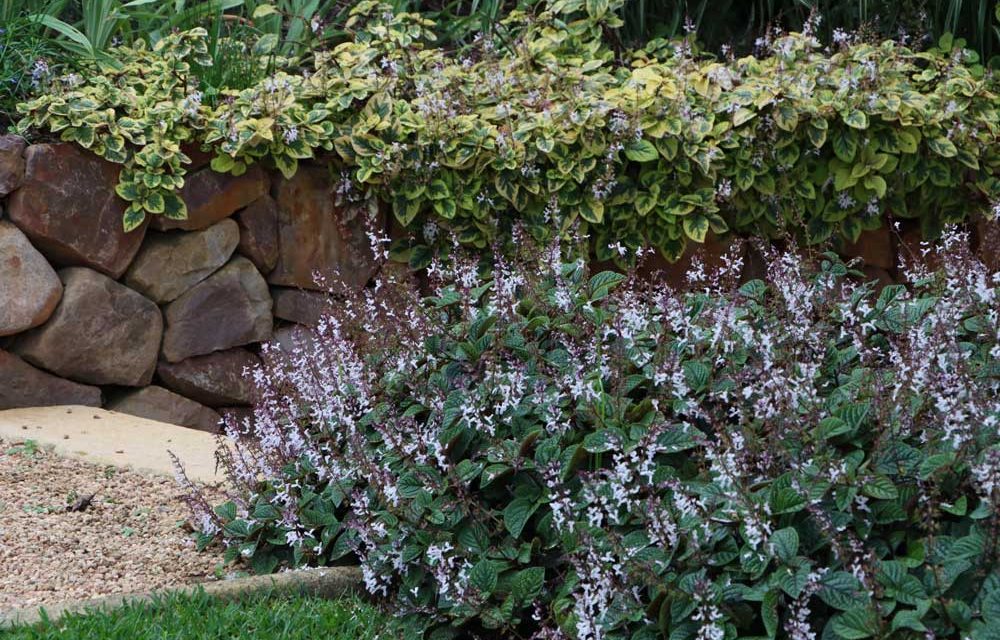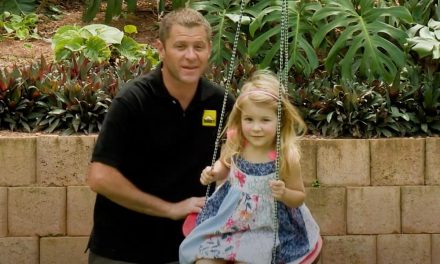There are not many plants that can turn shade into a fairy landscape of dainty flowers in a season when most others are over it. Plectranthus will do just this!
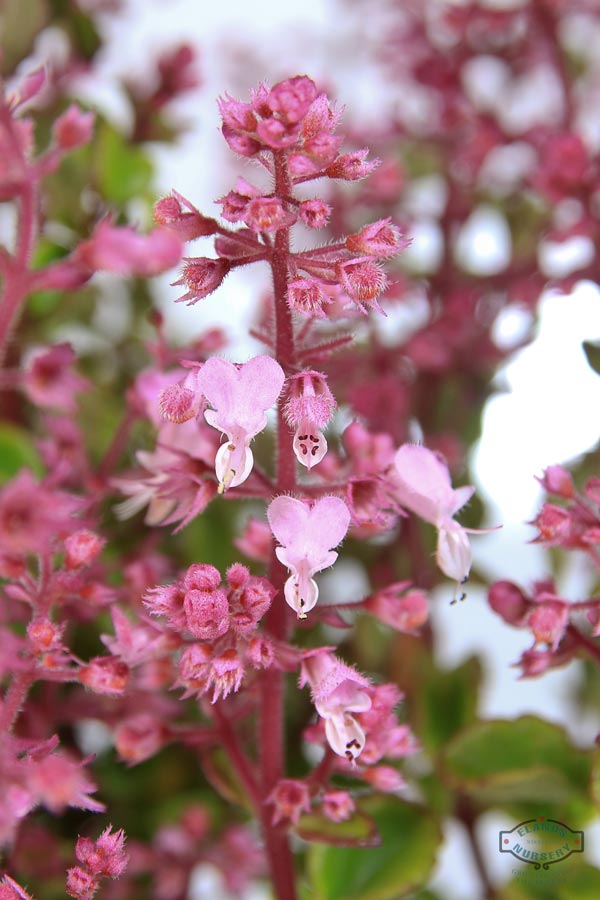
Plectranthus plants like warm and moist conditions, and flowering is triggered by short day lengths. This means that these well-known garden plants will produce a glorious display of colour from late summer, through autumn and into winter.
General characteristics
- Odorous whiffs (not unpleasant to all) will escape when the leaves of some species are crushed;
- Shallow roots: some groundcover species will root spontaneously where nodes come into contact with the soil;
- Flower spikes consisting of freckled flower faces in a range of colours including white, pink, blue, mauve and deep purple;
- They prefer humus-rich soil and regular watering, although periods of drought will be tolerated;
- They will survive cold, but are damaged by frost – in such conditions some can be grown as very nice houseplants;
- They need a good prune back in midwinter after flowering to encourage new growth in spring, and a dose of general all-purpose fertiliser afterwards. Strangely enough, they do not like being fed when flowering…
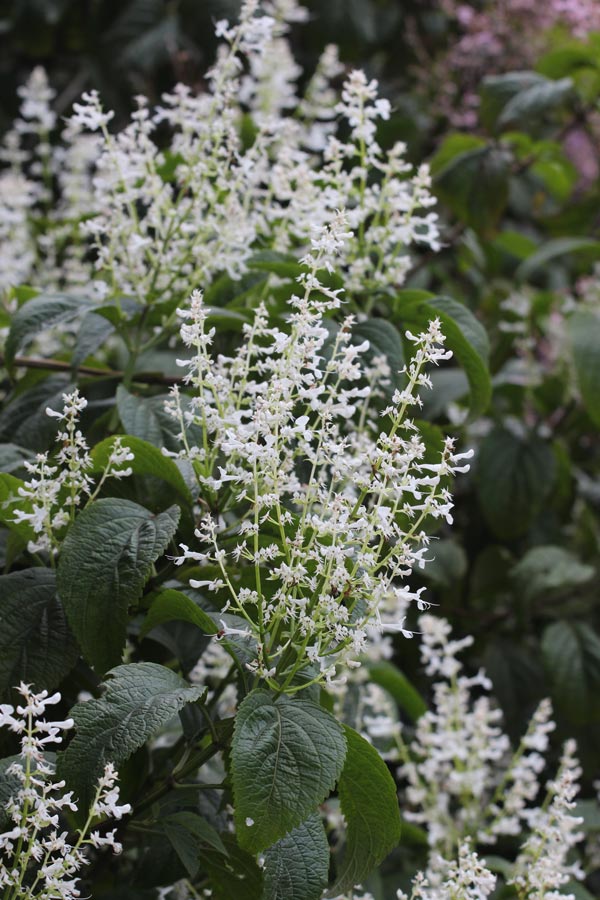
Plectranthus ecklonii (tall spurflower)
This is a large, erect and fast-growing shrub up to 3m tall, useful for shade or dappled shade in spacious beds. The leaves are large and elliptical, and arranged in opposite pairs on square stems. The full flower spikes are produced in masses and colours can vary from pink to purple or white. Like all other Plectranthus species, it can be rooted easily from cuttings taken in late winter or early spring, when the plants should be cut back by about half their size. Folks with cold and frosty gardens can grow them in large containers in a protected area like a courtyard garden.
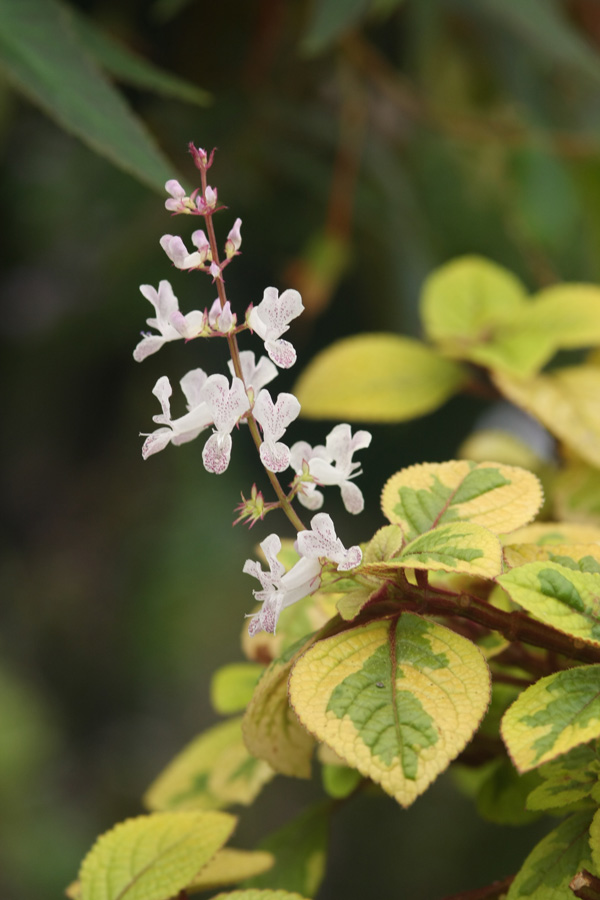
Plectranthus ciliatus (speckled spurflower)
This one grows along the ground, reaching up to about 60cm high with very attractive quilted leaves that are often burgundy to deep purple on the undersides. The leaf margins as well as the stems have purple hairs that resulted in another common name: eyelash spurflower. The flower spikes are dainty with white to light purple individual flowers and can appear from September to May. This is a host plant for many little pollinating insects as well as a number of indigenous butterfly species. If the leaves of garden plants suddenly have holes chewed into them, tolerate this temporary damage and do not spray the plants as you might kill off their caterpillars. The speckled spurflower is also a lovely choice for patio pots and hanging baskets as it will cascade beautifully. To give them a dense appearance, pinch out the growing tips of the stems now and again.
Plectranthus cilliatus ‘Shasha’
This is a golden cousin of the speckled spurflower. The hybrid has delicate white flower sprays, but is more valued for its purple stems and golden-yellow foliage with the odd emerald green and bronze markings. Shade too deep might dull the lovely leaf colouring so allow for a bit of morning sun to warm it gently. It is a great choice for hanging baskets and will also grow well indoors in bright light. Size about 30 x 40cm.
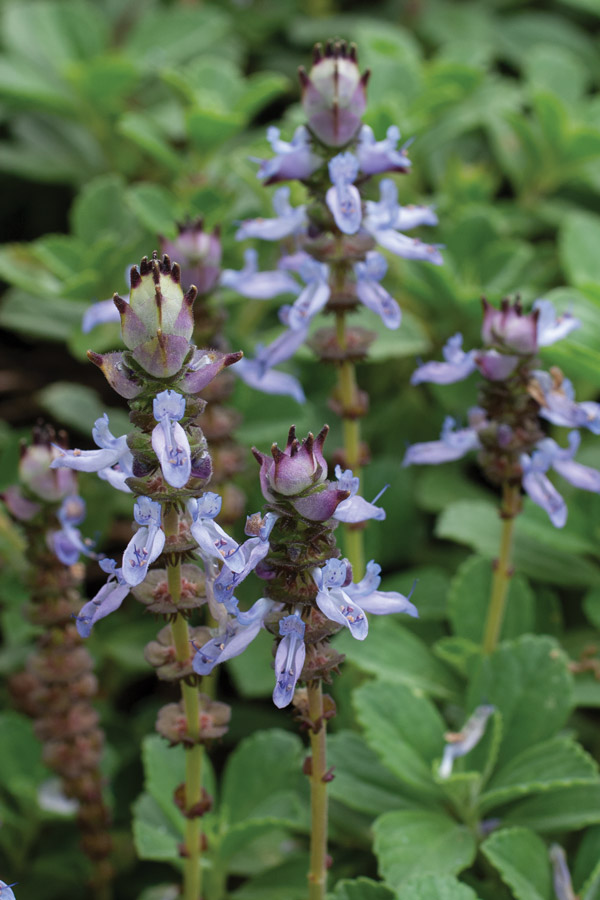
Plectranthus ‘Mona Lavender’
Seeing as we got the better end of the deal as far as plectranthuses are concerned, it did not take South African horticulturists long to crossbreed one of the best ones in the world, which is how Plectranthus ‘Mona Lavender’ came into being at Kirstenbosch Botanical Gardens. Good sense and good marketing by an international brotherhood gave this plant a firm global foothold.
‘Mona Lavender’ is a fast-growing perennial up to about 70 x 60cm with a neat, rounded shape. Growth is dense and compact with purple stems covered in dark green glossy leaves with deep purple undersides. The hearty sprays of flowers are lavender hued with dark purple markings on thin stems above the foliage. ‘Mona Lavender’ will tolerate more sun than other spurflower types and will also flower intermittently throughout the year.

Plectranthus chimanimaniensis
This one, with the very difficult to pronounce name, has a natural ability to cope in difficult conditions varying from cold and wet to extremely hot and arid. It is an evergreen shrub reaching 80cm – 1m in height. The delicate small green leaves are plentiful and support a mass of flower spikes that start blooming from spring and reach their peak colour display during autumn and early winter. From a distance the plants present a beautiful and consistent pink haze in the garden!

